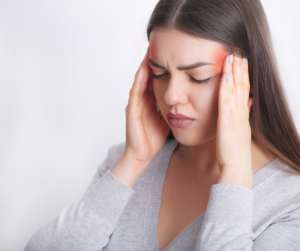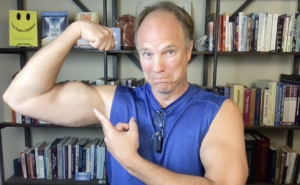Anxiety is a complex and often overwhelming emotional experience that can manifest in various physical symptoms. In this article, we’ll delve into the physical manifestations of anxiety, exploring how stress affects the body and discussing effective strategies for managing anxiety-related physical symptoms. Additionally, we’ll highlight the role of hypnosis as a valuable tool in addressing both the psychological and physical aspects of anxiety.

Understanding Anxiety – Physical Symptoms
Anxiety physical symptoms can manifest in a wide range of bodily sensations, including:
- Rapid heartbeat or palpitations
- Chest tightness or discomfort
- Shortness of breath or hyperventilation
- Muscle tension or stiffness
- Trembling or shaking
- Sweating or hot flashes
- Nausea or digestive issues
- Dizziness or lightheadedness
- Fatigue or weakness
- Headaches or migraines
These physical symptoms are the body’s natural response to stress and perceived threats, often referred to as the fight-or-flight response. When faced with a perceived danger, the body releases stress hormones such as adrenaline and cortisol, triggering physiological changes designed to help us respond to the threat.
However, in the case of chronic or excessive anxiety, this stress response can become dysregulated, leading to persistent physical symptoms even in the absence of a real threat.
Managing Anxiety – Physical Symptoms
- Deep Breathing Exercises: Deep breathing exercises can help activate the body’s relaxation response, counteracting the physiological effects of stress. Practice diaphragmatic breathing or the 4-7-8 technique to promote relaxation and alleviate physical symptoms of anxiety.
- Progressive Muscle Relaxation: Progressive muscle relaxation involves systematically tensing and relaxing different muscle groups, helping to release tension and reduce muscle stiffness associated with anxiety. Regular practice can help individuals manage muscle tension and promote overall relaxation.
- Mindfulness Meditation: Mindfulness meditation teaches individuals to observe their thoughts and bodily sensations without judgment, allowing them to cultivate a sense of calm and acceptance. By practicing mindfulness regularly, individuals can develop greater awareness of their physical symptoms and learn to respond to them more effectively.
- Physical Activity: Engaging in regular physical activity, such as walking, jogging, or yoga, can help reduce tension and promote relaxation. Exercise stimulates the production of endorphins, neurotransmitters that promote feelings of happiness and well-being, helping to alleviate physical symptoms of anxiety.
- Hypnosis: Hypnosis is a therapeutic technique that can help individuals manage both the psychological and physical aspects of anxiety. During hypnosis, individuals are guided into a state of deep relaxation, allowing them to access their subconscious mind and explore the root causes of their anxiety physical symptoms. Hypnosis can help individuals develop coping strategies, reframe negative thought patterns, and promote overall well-being.
Anxiety physical symptoms can be distressing and debilitating, impacting both mental and physical health. By understanding the body’s response to stress and learning effective strategies for managing physical symptoms, individuals can take proactive steps to alleviate their anxiety and improve their quality of life.
From deep breathing exercises and progressive muscle relaxation to mindfulness meditation and physical activity, there are many natural approaches to managing anxiety physical symptoms. Additionally, hypnosis offers a powerful tool for addressing both the psychological and physical aspects of anxiety, providing individuals with the skills and resources they need to overcome their symptoms and thrive.
Get a free copy of my program, The Power of Your Unconscious Mind. It will explain where the anxiety comes from and how we can get rid of it.

